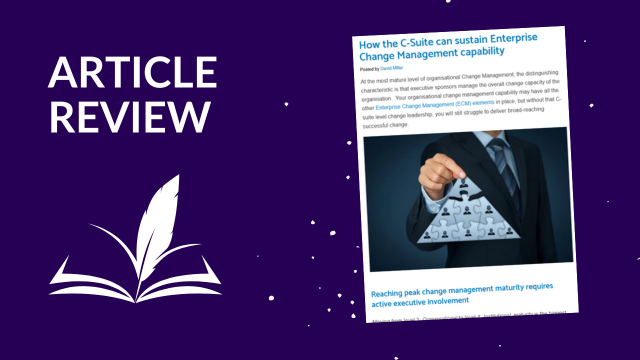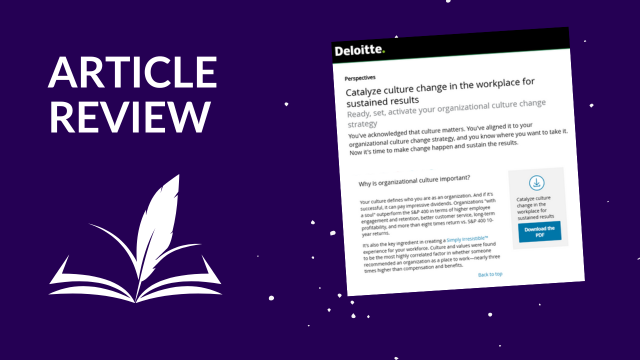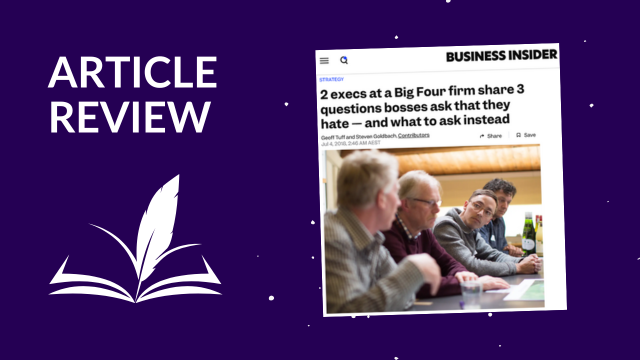C-suite executives tend to be good at launching major change initiatives. Rosy promises of the future benefits the change will bring coupled with stoic statements of the hard work that will be needed to succeed are often adorned with all of the hoopla of a pep rally. Then, almost as quickly as they appeared in front of the organization to launch the change, they disappear, back to ‘keeping focused on the business of the business.’ Those tasked with executing the change (designated change sponsors and change practitioners) are expected to carry the change through over the coming months, and even years, only engaging the leadership team with periodic updates and (if needed) crisis management. This scenario, all too familiar to anyone who has been engaged in a major change initiative, is a sure path to achieving less than what was promised.
In their blog post How the C-Suite can Sustain Enterprise Change Management Capability, Change First writes, “Having insufficient time, they delegate the execution of key initiatives to mid-level programme managers and other staff support groups. This in turn means that leadership for the change initiative is diluted or absent. Inevitably the change initiative loses urgency, momentum and credibility for those touched by the change. This impact then trickles down to the next level of leadership, already overwhelmed by the amount of work they need to deliver, plus being expected to pick up additional work to fill the gaps left by the executive sponsor. And so they delegate and so on and so on.”
At the heart of the challenge as seen by Change First is the failure of the organization to manage change demand to avoid overwhelming the organization’s capacity for change. Their model of change management maturity identifies Level 4 as the highest maturity level. At this level:
- “Change management is adopted throughout the organization.
- “Executives spend time assessing the demand for change as a whole and the level of capacity the organization possesses.
- “Change agents build continuous improvements into change management. Case studies are produced to show the effectiveness of change management.
- “Change management is built into the culture – it becomes ‘the way we do things around here’.”
The ability to say ‘No,’ even when it is a really tough change to turn down, is critical for senior executives if the organization has any hope of having the capacity for their most important change initiatives to succeed. Change First identifies two critical leadership mindsets associated with achieving change success at this level.
- “Managing change effectively is a core competency in this organization.
- Assessing people’s capacity and limits to changing successfully is a core part of strategic decision-making.”
Where is your organization’s C-suite when it comes to change? How well is your organization managing the change capacity/change demand dynamic? Is change management “the way you do things around here” or a nice to have?







